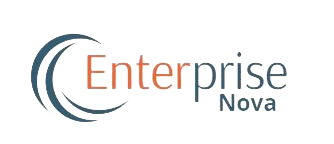In what feels like a plot straight out of a tech utopia—or perhaps a Studio Ghibli film itself—OpenAI’s ChatGPT has just made history. Within a single electrifying hour, the Artificial Intelligence (AI) platform added over one million new users, thanks to the release of its latest innovation: an image generation feature that can create stunning visuals on demand, many echoing the dreamlike charm of Ghibli-style animation.
The viral phenomenon, now dubbed “The Ghibli Effect,” saw users across the globe flooding the platform, asking it to craft magical landscapes, whimsical creatures, and storybook scenes—all with the brushstroke of artificial intelligence. On platforms like X (formerly Twitter), TikTok, and Reddit, timelines transformed into endless scrolls of fantastical artwork, each piece bearing a distinctly human touch… except none were made by human hands.
From Whisper to Wildfire
Sam Altman, CEO of OpenAI, confirmed in a post that the uptake of the new image feature beat all previous records. “It took us five days to reach a million users when ChatGPT launched,” he said. “This time, it took one hour.” The server strain was so intense that the platform experienced temporary slowdowns and access issues—ironic proof of its own popularity.
The feature is part of the new GPT-4o update, a major leap for OpenAI’s flagship model. This version combines text, voice, and now image capabilities in one seamless package, putting the power of a creative studio, digital assistant, and knowledge engine all into your pocket.
A Surge That Attracted Billions
But this was not just a viral fluke. Behind the aesthetic appeal is a serious business story. Shortly after the launch, OpenAI closed a landmark $40 billion investment round led by SoftBank, pushing its valuation to an eye-popping $300 billion. Investors are betting big on OpenAI’s potential to lead the next wave of digital transformation—not just in tech, but in art, education, customer service, and beyond.
The funds will accelerate OpenAI’s march toward Artificial General Intelligence (AGI)—AI that can perform any intellectual task a human can—with a special focus on making these tools more intuitive and widely accessible.
A Beautiful Controversy
Yet for all its success, the feature has reignited long-standing tensions in the world of art and intellectual property. Some creators argue that AI art, especially when it mimics iconic styles like that of Hayao Miyazaki, brushes dangerously close to artistic appropriation. Others worry about the implications for creative industries already feeling threatened by automation.
“Styles are not protected under copyright,” says a legal analyst from Reuters, “but the ethical conversation is far from over.” Miyazaki himself has previously criticized AI art, famously calling it “an insult to life itself”—a perspective that brings up deep concerns about what we lose when machines try to copy human creativity.
The Future Is Illustrated
Still, the momentum shows no sign of slowing. Millions of users, from professional designers to curious teens, are now wielding ChatGPT’s new powers to generate comics, storyboard films, design video game concepts, and even decorate their bedrooms with prints of AI-crafted worlds.
We are witnessing a new creative rebirth—one where the imagination is limitless, and the artist could very well be a machine. Or, more precisely, a machine that learns from us, creates with us, and maybe even dreams a little like us.
As OpenAI continues to scale this mountain of innovation, one question hangs in the digital air: Is this just the beginning?

